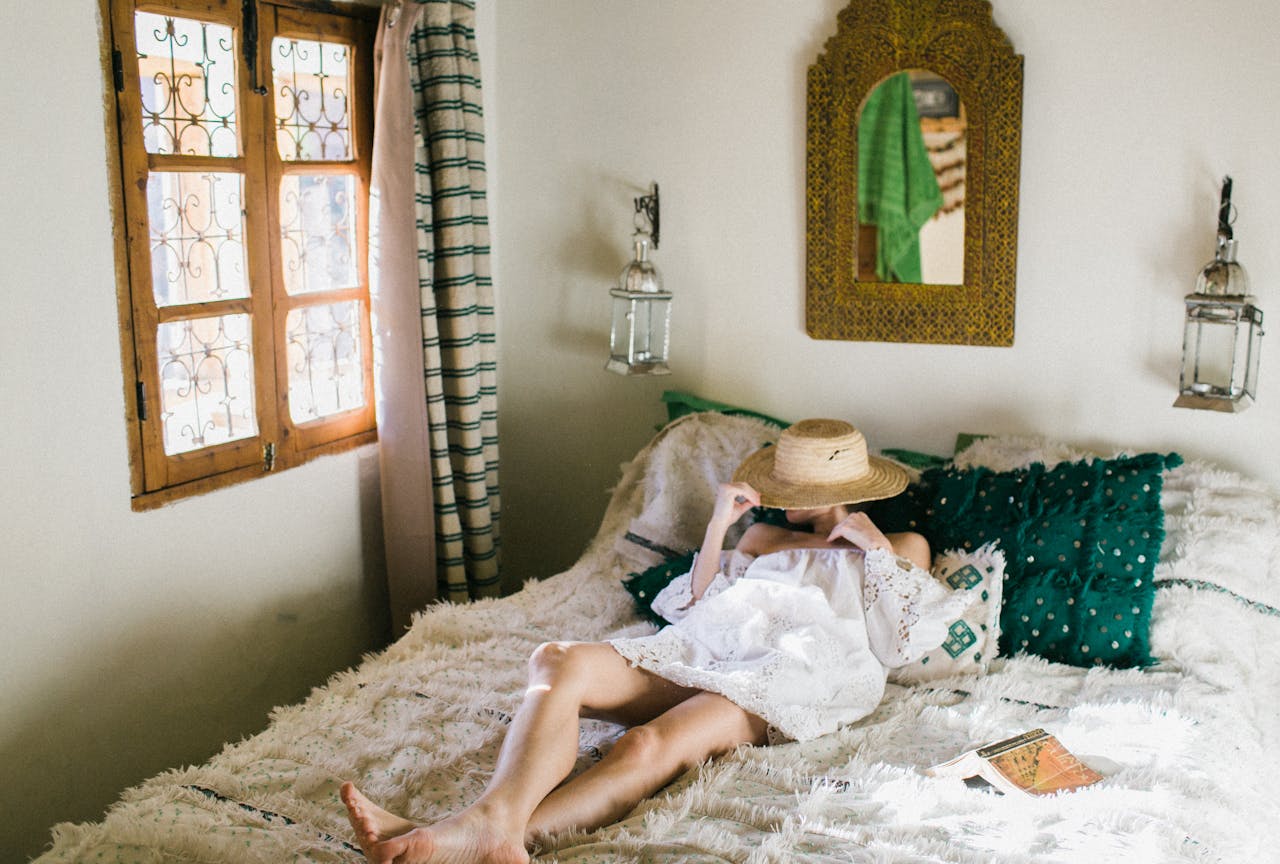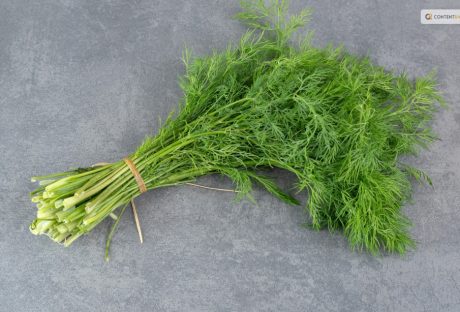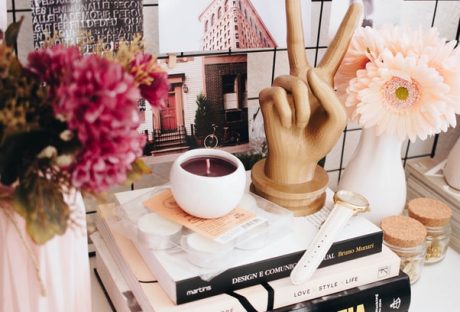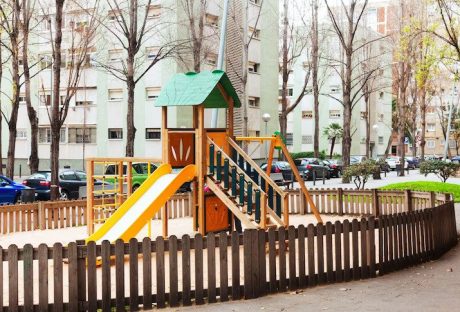Are you thinking about bedroom decor ideas for this summer? Seems like we have heard your thoughts already!
When we think about summer, we start to paint a picture already: summer berries, enjoying Pimm’s with close ones, and whatnot! But what if I tell you there is another way to enjoy your summer? Yes! Your bedroom.
Summer is a warm hug and a perfect moment to give your bedroom a seasonal look. You just transform the bedroom that captures its vibrancy and calmness.
A well-decorated bedroom enhances your living space. Moreover, it affects your frame of mind and happiness levels. However, summer is the right time to refresh and revamp your bedroom decoration.
This period offers an opportunity to introduce lighter shades. With warmer weather and longer days, transform the place into a serene summer retreat.
Here are some creative summer bedroom decor ideas to help you bring the summer’s feeling into your room:
Bedroom decor ideas to update your home for summer
When I was a kid, I always saw Mum making a huge deal of changing bedsheets into linens during summer. We even had summer special lighting and curtains. My mum used to love decorating the bedrooms based on the seasons.
I feel like this has been passed on to me. Be it my college dorm or my present bedding, I always try to change the settings.
Today, I will share a few bedroom decor ideas to help you decorate your room this summer.
Choose Lightweight Bedding
Switching to lightweight bedding is one of the best decisions for this season. Heavy duvets and thick blankets offer warmth during winter months. But during summer, they make a house stuffy and uncomfortable.
So, go for materials such as cotton or linen that breathe and keep one cool during hot summer nights. Some of the options include light quilts or plain cotton sheet sets. These options provide comfort and create a relaxed and casual atmosphere in the room.
Consider Coastal Decorations
Coastal decor can be included in your bedroom to bring the beach’s essence. The idea behind this is that coastal décor reminds people about being on holiday. Their bedrooms feel like they have escaped from everything else around them.
They feel completely new again, full of ocean freshness and air seasoned by relaxation.
If you want an ocean theme, you can start with soft blues and sandy beige. I recommend ending your decoration with crisp whites to give it a more vacation vibe. You can also provide textures like rattan or driftwood. That’d be a nice, desirable addition to it.
Alternatively, one can hang pictures of oceans, beaches, and coastal landscapes on their walls. This will give the impression of the summer holiday they went on vacation. So, whenever you enter the room, you will feel like you are at your favorite resort.
Choose a Summer Color Palette
If you switch to a summer color palette, your bedroom atmosphere can change. In summer, colors should be light, bright, and cheerful.
For instance, there are some shades like sunshine yellow, green, and pastel pink, which, when integrated into your space, make you happy and energized again.
You do not have to repaint the whole room to adopt a summer color palette; small changes make all the difference. For example, adding colorful throws at the end of the bed or changing pillow covers might be enough.
Sometimes, even new pieces of vibrant artwork may also help refresh your space here and there, depending on how far you want to go with it.
Don’t forget the walls
To maintain your summer theme, you can choose light and airy paintings and photographs. Now, if you want my suggestions, I recommend you go for floral photos. Crafted pieces in spring or summer palettes can also help your bedroom look more cozy and summerlike.
Add Decorative Pillows

Decorative pillows can freshen up the bedroom for the summer. They do more than add a pop of color; they introduce new textures and make rooms look warm and cozy.
Therefore, when considering which pillows to buy for your summer home, think about colorful items that reflect the right mood for the season.
However, some pillow designs have been made specifically for this period, so you have to pick such ones on our website. These could be tropical print themes, floral prints, or nautical motifs, among others, but not limited to them.
Furthermore, texture should also be considered when purchasing these items. These may consist of cotton, flaxen, or light velvets, which, in most cases, give them deeper emphasis.
Add Summer Florals
There’s something about vibrant blooms that reminds us of summer. You can bring nature indoors and make your room smell amazing by incorporating flowers. Several options include summer florals in your bedroom, ranging from real bouquets to flower patterns.
So begin by putting a vase full of fresh flowers on top of a nightstand or dressing table. All you need to do is select those that are flowering during this time, such as peonies, sunflowers, or daisies.
Not only will the attractiveness and fragrance included in one package make it feel special. If you don’t want live plants, then go ahead and purchase artificial ones, which are still good since forever may never come anyway.
Bringing It All Together
These suggestions can help you create a cohesive summer look in your bedroom. Start with a neutral palette and then gradually add summer elements.
You could begin by changing your bedding and slightly embellishing it with some pillows. Then, choose a few coastal décor items and anything else on your color scheme during summer. Last but not least, include some summer blossoms in your design stage.
The idea is to create an environment that feels light and breezy and has all the charms of summertime.
Do not hesitate to try out different combinations until you find one that suits your style best while keeping things fun and summery in your bedroom retreats at all times.
Conclusion
Redecorating the bedroom for the hot season may be an exciting project. This will involve selecting lighter linens, going nautical, settling on colors for warmer months, including extra cushions, and involving more summer florals.
Get started today, turning your bedroom into an ultimate haven for this year’s warmest period! Lastly, if anyone wishes for any decor-related things such as pillows, curtains, and many other bedding materials, then consider checking out the Latest Bedding.
They have quality products, such as stylish ones, that can bring dreams concerning what kind of decorations are expected in homes every weekend over the summer holidays.
Continue Reading:





















